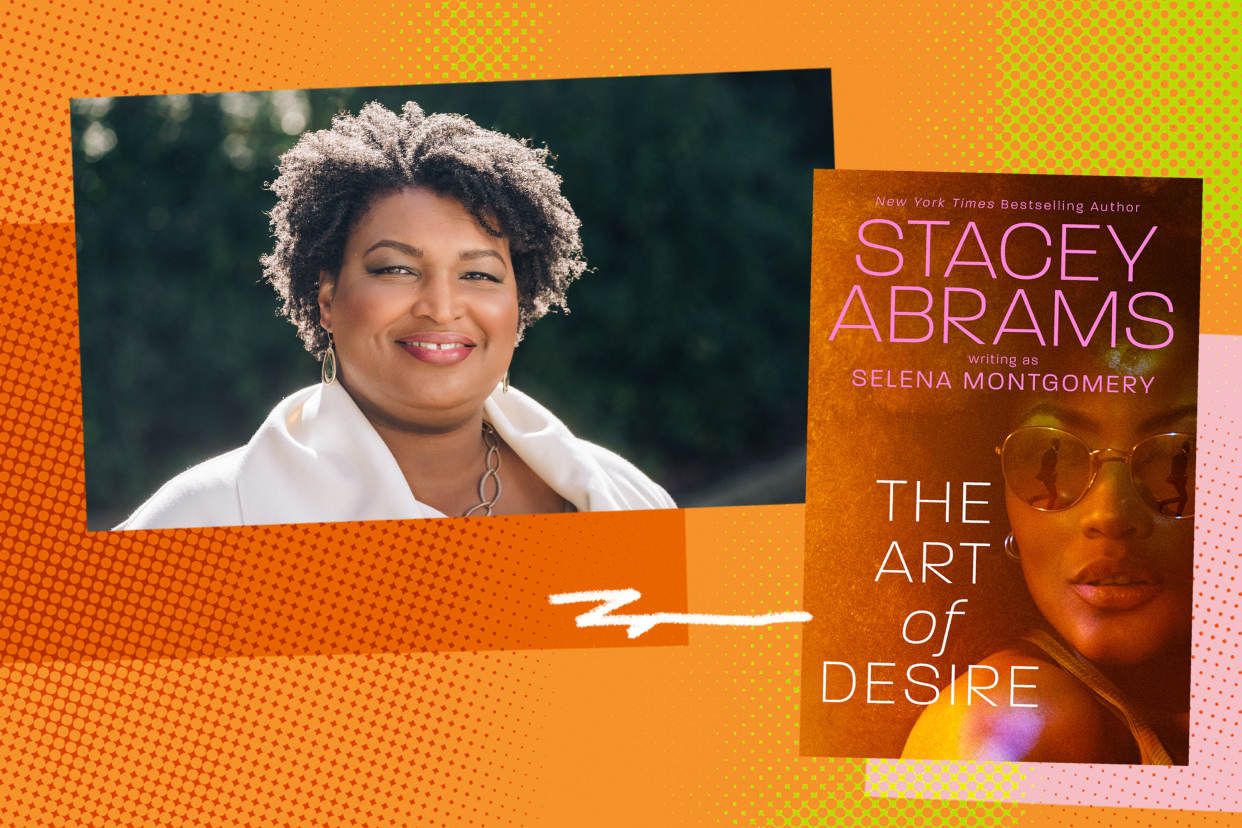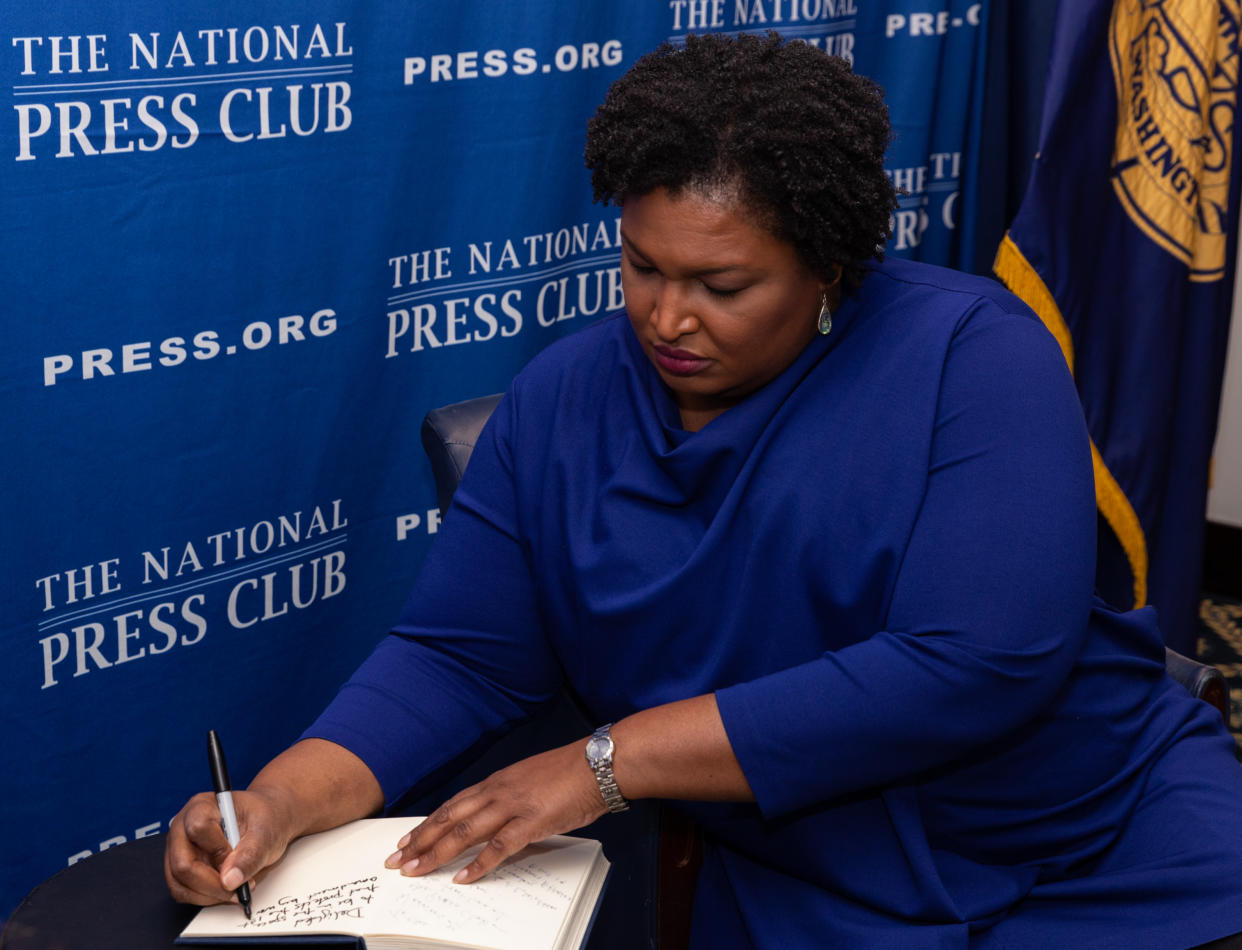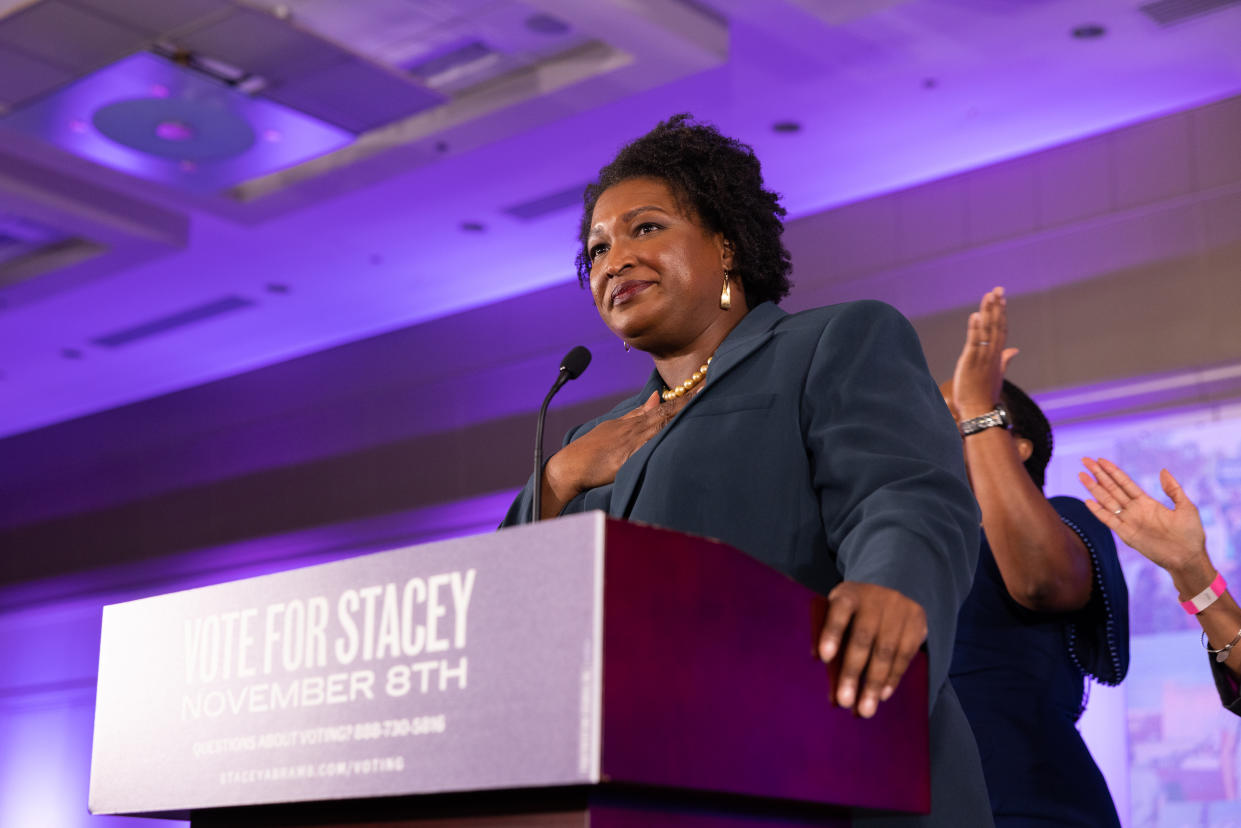Stacey Abrams: Why I'm reclaiming my name after writing romance novels under 'Selena Montgomery'

In the world of romance, Selena Montgomery writes tales of intrigue, passion and power. But in the political arena, the woman behind the pseudonym, Stacey Abrams, is a real-life protagonist fighting for voting rights.
Before becoming a household name in politics, Abrams had a successful career as a romance novelist under the nom de plume Selena Montgomery, under which she wrote eight books. She also published others under her real name, including her latest: Rogue Justice, While Justice Sleeps (which she wrote in the middle of 2015 political campaigns) as well as a memoir, Lead From the Outside, and children’s books.
The name Selena Montgomery was inspired by Bewitched actress Elizabeth Montgomery, who played both Samantha on the hit 1950s sitcom as well as her evil cousin Serena, according to the New York Times. When Abrams's first novel was published in 1999, writing under a pseudonym was par for the course as she was building her career in politics and policy writing, she told BET.
That's in the past now. The multifaceted Abrams has since rereleased her 2001 spy romance thriller The Art of Desire — this time, with both of her names on the cover. And as she tells Yahoo Entertainment, reclaiming her name has become a story more captivating than fiction.
1. Now that the world knows Stacey Abrams is Selena Montgomery, and Stacey Abrams is Selena Montgomery, how does it feel to reclaim your name?
I have always been proud of my writing as Selena Montgomery, and my deepest sentiment is gratitude — that now I am in a place where I have the opportunity to integrate all aspects of my writing and my investigation of the world.
Whether it is explaining the anti-feminist aspects of the tax code [as Abrams] or celebrating the fierce independence of a heroine [as Montgomery], I appreciate that I can now more fully navigate the entire landscape as Stacey Abrams and Selena Montgomery.

2. Can you describe your writing process? What do you find works best for you?
I'm a very methodical writer, and I believe it is important to know where you're going to end up and how you're going to get there. The destination may wildly diverge, but at least I know where I thought I was headed.
To map it out, I start out with a one-page synopsis, and then draft a storyboard where I lay out the key activities of each chapter: What problem does the character face? What complications exacerbate the problem? How does the character solve it? And reveal a new problem. This last part is key because if you've ever read a book that you put down in the middle, and you don't remember why you stopped reading, it's likely because the story created a problem that either solved it too easily or simply kept repeating the same challenge with a light veneer. Once my storyboard is finished, I transfer the chapters onto notecards with additional details or research needs.
As for writing, I do not set a time or a date; instead, based on the time I have, I determine how much writing I can accomplish before I must shift to another obligation. Then I carve out the time it takes to complete that chapter, plug it into the calendar and write.
The most critical part of my process is letting my characters grow in their space. Thus, depending on the topic or the area of interest, I let myself learn new things as I write and try to incorporate it as much as I can. When I wrote The Art of Desire, I wrote it from a tiny dining room table in an apartment I shared with my older sister. I remember listening to guitar music and drinking a lot of black tea.
3. What are you most fearful of and what are you most hopeful for when thinking about the future of America?
Much of my work is driven by the goal of inclusion — inclusion in democracy, in access to economic opportunity, in access to justice. Whether I am writing, starting a business, standing for office or supporting a civic cause, this ambition of full inclusion fuels my efforts.

Thus, I am deeply concerned by the blatant attacks on how we invite more into these arenas, particularly given a recent spate of lawsuits and policies that seek to block access and investment in communities that have long been marginalized or disadvantaged.
However, my approach to work has never been grounded in hope. I prefer to focus on action — being determined to do right and to assist those who are committed to justice and opportunity.
